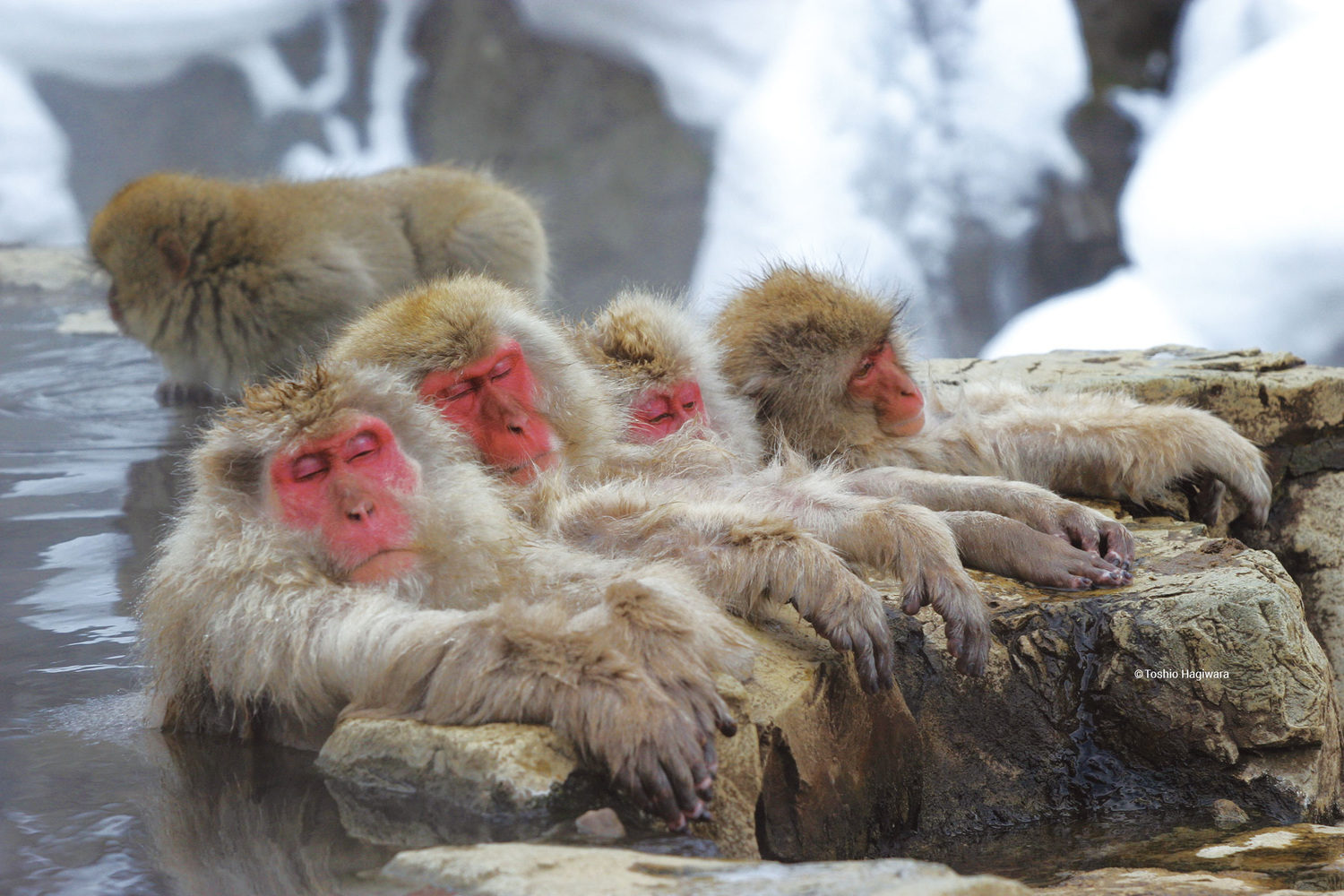
Others of their species live even farther north, farther than any other nonhuman primate, so they are able to adapt to winter weather.
But the source of this troop's fame is an adaptation that only they exhibit: soaking in hot spring bathing pools. Their habitat is full of natural hot springs that tend to be over 140 degrees Fahrenheit, a temperature that is apparently uncomfortable for the monkeys.
It wasn't until 1963 that a young female macaque was first observed bathing in a pool built by a hotel, with the water cooled to a temperature comfortable enough for humans and monkeys.
At first, one or two monkeys joining human visitors were a curiosity , but eventually they became a nuisance and health hazard, and a park was built with hot spring pools at a comfortable 104 degrees Fahrenheit, for monkeys only.
The monkeys have been a long time tourist attraction and favorite of photographers, and it looked like they were trying to stay warm. Only recently have scientists investigated this behavior by measuring levels of stress hormones and observing the effects of social structure.
Rafaela S.C. Takeshita and her colleagues at Kyoto University collected and tested the monkeys' feces for levels of glucocorticoids, which increase with stress. The cold is known to cause levels of these hormones to go up. They published their results in the journal Primates.
As expected, during the periods when the monkeys were bathing, stress levels were down. Another indication of the value of bathing to the macaques was that the higher-ranking females spent more time in the pools.
Dr. Takeshita said that the males are usually on the periphery of the troop at this time of year and did not spend much time bathing, so she only studied the females.
She also said she was inspired by the monkeys, in a nonscientific way.
"I confess that during my research, many times after, I jumped into one of the hot springs pools," the ones for humans, that is.



Reader Comments
to our Newsletter